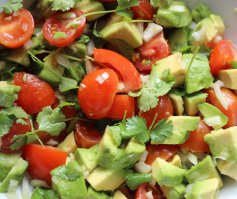 The topic of choosing what is useful and healthy for our body in the shop is still alive. It is extremely difficult to dispense with the whole mass of temptingly packaged goods, especially when you enter a market straight after work, with an empty stomach. In such moments we grasp what we think will quickly quench hunger and thirst. Most often there are articles that absolutely contradict the philosophy of healthy eating.
The topic of choosing what is useful and healthy for our body in the shop is still alive. It is extremely difficult to dispense with the whole mass of temptingly packaged goods, especially when you enter a market straight after work, with an empty stomach. In such moments we grasp what we think will quickly quench hunger and thirst. Most often there are articles that absolutely contradict the philosophy of healthy eating.
 Always make sure you go to the store after a meal and have a list of goods you really need at hand beforehand. By keeping this order, we are able to significantly reduce unnecessary expenses, buying products in excess, throwing spoiled food into the basket and unhealthy eating. Buying products in e-shops with food may also prove to be a good solution. In comfortable conditions we can compare prices per kilo of a given product, make sure that it is not in the fridge and think about whether we need it in the coming days. More importantly, we have more time to look at the composition of these products! If you're a fan of visiting a traditional store, try to give yourself some peace of mind and time to analyze the labels of what you put in your shopping cart.
Always make sure you go to the store after a meal and have a list of goods you really need at hand beforehand. By keeping this order, we are able to significantly reduce unnecessary expenses, buying products in excess, throwing spoiled food into the basket and unhealthy eating. Buying products in e-shops with food may also prove to be a good solution. In comfortable conditions we can compare prices per kilo of a given product, make sure that it is not in the fridge and think about whether we need it in the coming days. More importantly, we have more time to look at the composition of these products! If you're a fan of visiting a traditional store, try to give yourself some peace of mind and time to analyze the labels of what you put in your shopping cart.
What should I pay special attention to?
Nutritional value of the product - amount of calories. This size is always indicated on the packaging in relation to 100 grams of product.
Healthy quality of the product - assess whether the content of protein, fat and carbohydrates is low enough, with a high proportion of vitamins and minerals.

Shelf life - learn how to recognize fresh goods such as meat or fish. They should not be bought in large quantities (for stock). Always look at the packaging, check that it is not damaged, torn or cracked.
How to store fresh products - make sure that the food in the store is properly stored. Are perishable items in freezers and fridges? Also get a thermo-insulating bag if you want to buy frozen products. Remember that foods once defrosted should not be frozen again.
Take care to buy products with low fat content, e.g. milk with 2% fat content, lean cheese. Avoid greasy cheeses, mouldy cheeses, melted cheeses, homogenized cheeses. Similarly, look at meat products.
While staying with the meat for a while, remember to eat red meat at least once a week, which is an excellent source of iron. The diet should also include fish meat (at least twice a week).
When buying oils, check whether they are suitable for frying and baking or just for cold use.
Read how the products have been seasoned. If salt has already been added to them, do not season them again.

Try to replace sweets with fresh fruit, possibly dried fruit.
Instead of colourful sweetened and carbonated drinks, buy mineral water, non-carbonated water, fruit and vegetable juices and dairy drinks.
Investigate how many salts, colour additives, flavour enhancers, flavour enhancers, preservatives, stabilizers and other similar unhealthy additives have been placed in the product.
Just as you pay attention to harmful substances, look for products that contain the maximum amount of ingredients to support your health. Buy products that are enriched with vitamins, minerals, etc. The most frequently refined products include milk and milk products, fats (margarines), breakfast cereals, pasta, fruit and vegetable juices and even cakes.















